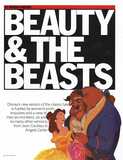
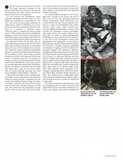
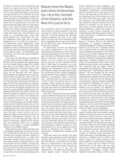
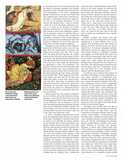
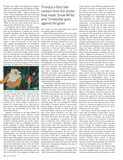
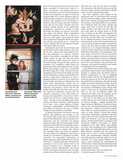
Disney's new version of the classic talel is fuelled by women's erotic impulses and a view of men as monsters, as are so many other versions, from Jean Cocteau to Angela Carter
The first Beast was the god of love, Eros. The many successive versions of the Beauty and the Beast fairy tale have continued to develop him in this role, and the new Disney Beauty and the Beast is no exception.
[…]
The divine Beast offers writers and film-makers a figure of masculine desire, and the plot in which he moves presents a blueprint for the proper channelling of erotic energy in society. It is Psyche, however, who has to strive to that end; the story is her journey, the journey of the soul. This makes her the protagonist, occupying the more usually male role of the chivalrous quester, but it also consistently leaves in place the Eros figure as the object of the soul's quest, again in a reversal of the more expected pattern of chivalry.
[…]
Linda Woolverton and the team who collaborated on the new Disney Beauty and the Beast have clearly steeped themselves in the tale's history, on and off screen; prolonged and intense production meetings, turning over every last detail of representation and narrative, can almost be heard over the insouciant sound-track. This is a fairy tale that's vividly aware of contemporary sexual politics; it has consciously picked out a strand in the tale's history and developed it for an audience of mothers who grew up with Betty Friedan and Gloria Steinem, who have daughters who listen to Madonna and Sinéad O'Connor. Woolverton's screenplay gives us a heroine of spirit who finds romance on her own terms; and beneath this prima facie storyline, the interpretation contains many subtexts, both knotty and challenging, about changing concepts of paternal authority and rights, about permitted expressions of male desire, and prevailing notions in the quarrel about nature-nurture. Above all, it places troublingly before our eyes the domestication of feminism itself.
[…]
The tales in the Beauty and the Beast cycle number among the most eloquent testaments to women's struggles against arranged marriage, towards a definition of the place of sexuality in love. The disenchantment of the Beast has long been a theme in the stories women have made up, among themselves, to help, to teach, to warn. Liking a Disney film doesn't come easily; admitting to enjoying a fairy-tale cartoon from the same studio that made Snow White and Cinderella, that held up simpering, gutless, niminy-piminy idiots as paragons and introduced children everywhere to expect malignancy from older women goes against the grain, like accepting all of a sudden that John Major has developed dress sense, or the Pope become a feminist. But this version of Beauty and the Beast is funny, touching and lively, and communicates romantic hopefulness with panache and high spirits. It's a true inheritor of a long literary tradition of romance, sieved through the consciousness of 70s feminism, which asked for plucky fairy-tale heroines and got this: a Hollywood belle who prefers books to hunks.